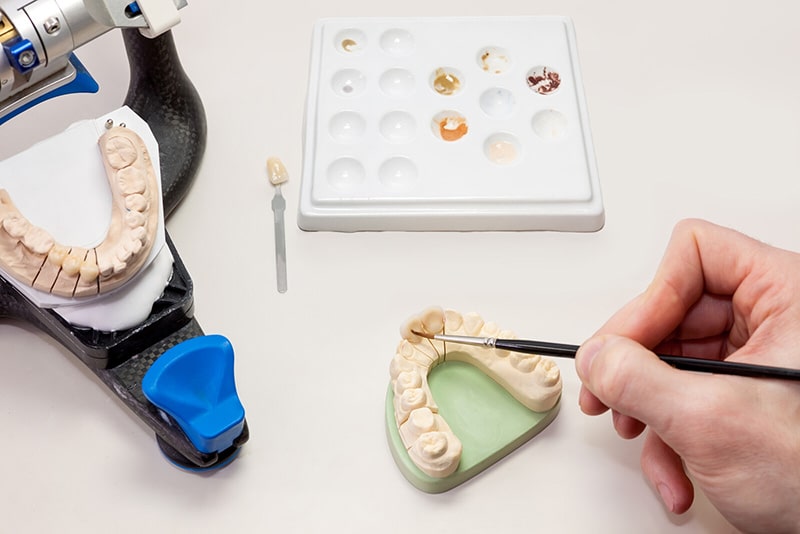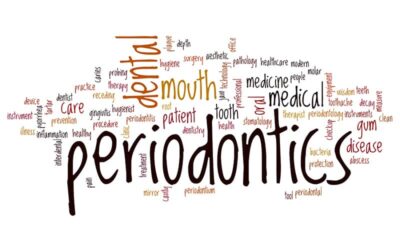Dental restorations or Restorative dentistry refers to dental procedures that repair or replace a tooth. The tooth structures can be missing due to decay, deterioration or fracture of tooth. Dental restorations can fix those problems. Restorative procedures include fillings, crowns, implants, bridges, dentures and root canals. Dentists or orthodontists performing these procedures can rely on professional dental billing services to submit claims on time with accurate codes. These procedures are done for diverse purposes such as – to restore the function of the teeth, improve the appearance of the teeth, prevent further dental issues, eliminate the pain caused by infections or preserve the bone density.
CDT Codes for Different Types of Dental Restorations
Crowns and Bridges
A crown is an indirect tooth restoration method, where a tooth-shaped “cap” is placed over a tooth to restore its shape, size, strength and appearance. A crown is used to cover – multiple decays on the same tooth, root canal treated tooth, or to support the tooth having a large restoration, when the filling or the tooth are showing signs of fracture. It is also recommended to hold a “bridge” or to cover a dental implant. It can make the tooth stronger and enhances the way it looks and restore the healthy color as well as its function to the tooth. They are made from different materials – metal alloys, ceramic, porcelain, porcelain fused to metal or a composite resin. During a crown placement procedure, the top part of the tooth is shaved down and the crown is placed over the top.
A bridge is an artificial tooth suspended between two crowns or one or more crowns splinted together to cover multiple damaged teeth. Bridges can be secured on both side by crowns and cemented permanently into place. They are made of porcelain, gold, alloys, or a combination.
These procedures can be reported on dental claims using codes such as
- D2710 Crown – resin-based composite (indirect)
- D2712 Crown – ¾ resin-based composite (indirect)
- D2720 Crown – resin with high noble metal
- D2721 Crown – resin with predominantly base metal
- D2722 Crown – resin with noble metal
- D2740 Crown – porcelain/ceramic substrate
- D2750 Crown – porcelain fused to high noble metal
- D2751 Crown – porcelain fused to predominantly base metal
- D2752 Crown – porcelain fused to noble metal
- D2780 Crown – ¾ cast high noble metal
- D2781 Crown – ¾ cast predominantly base metal
- D2782 Crown – ¾ cast noble metal
- D2783 Crown – ¾ porcelain/ceramic
- D2790 Crown – full cast high noble metal
- D2791 Crown – full cast predominantly base metal
- D2792 Crown – full cast noble metal
- D2794 Crown – titanium
- D2799 Provisional crown – further treatment or completion of diagnosis necessary prior to final impression
- D6245: Pontic – porcelain/ceramic
- D6740: Retainer Crown – porcelain/ceramic
- D6790: Retainer Crown – full cast high noble metal
- D6791: Retainer Crown – full cast, predominantly base metal
Fillings
Fillings are a common dental restoration method, where dental cavities and are typically filled using an amalgam or resin based material. Tooth decay or dental cavities are caused by bacteria or poor oral hygiene. Left untreated, bacterial infection will spread and cause structural problems that require more complex procedures. During the procedure, the dentist will remove the decayed part of the tooth and fill the hole with composite material to prevent the bacteria from continuing to infect the tooth. These fillings are made of gold, silver amalgam, or tooth-colored plastic and glass materials called composite resin fillings. Ceramic/porcelain fillings are more durable and long-lasting than composite resin.
- D2140 Amalgam – one surface, primary or permanent
- D2150 Amalgam – two surfaces, primary or permanent
- D2160 Amalgam – three surfaces, primary or permanent
- D2161 Amalgam – four or more surfaces, primary or permanent
- D2330 Resin-based composite – one surface, anterior
- D2331 Resin-based composite – two surfaces, anterior
- D2332 Resin-based composite – three surfaces, anterior
- D2335 Resin-based composite – four or more surfaces or involving incisal angle (anterior)
- D2390 Resin-based composite crown, anterior
- D2391 Resin-based composite – one surface, posterior
- D2392 Resin-based composite – two surfaces, posterior
- D2393 Resin-based composite – three surfaces, posterior
- D2394 Resin-based composite – four or more surfaces, posterior
- D2410 Gold foil – one surface
- D2420 Gold foil – two surfaces
- D2430 Gold foil – three surfaces
- D2510 Inlay – metallic – one surface
- D2520 Inlay – metallic – two surfaces
- D2530 Inlay – metallic – three or more surfaces
- D2542 Onlay – metallic – two surfaces
- D2543 Onlay – metallic – three surfaces
- D2544 Onlay – metallic – four or more surfaces
- D2610 Inlay – porcelain/ceramic – one surface
- D2620 Inlay – porcelain/ceramic – two surfaces
- D2630 Inlay – porcelain/ceramic – three or more surfaces
- D2642 Onlay – porcelain/ceramic – two surfaces
- D2643 Onlay – porcelain/ceramic – three surfaces
- D2644 Onlay – porcelain/ceramic – four or more surfaces
- D2650 Inlay – resin-based composite – one surface
- D2651 Inlay – resin-based composite – two surfaces
- D2652 Inlay – resin-based composite – three or more surfaces
- D2662 Onlay – resin-based composite – two surfaces
- D2663 Onlay – resin-based composite – three surfaces
- D2664 Onlay – resin-based composite – four or more surfaces
Implants
Teeth with severe decay or damage or missing teeth can be replaced with dental implants. Dental implants are replacement tooth roots. To benefit from this procedure, patients should have a healthy gum and enough bone to hold the implant. Two methods for implant restoration are – screw-retained or cemented. Screw-retained restoration has more advantages, as it can be more easily repaired in case of problems with a crown being fractured. These implants also function as anchors for bridges and dentures.
- D6010 Surgical placement of implant body: endosteal implant
- D6011 Surgical access to an implant body (second stage implant surgery)
- D6012 Surgical placement of interim implant body for transitional prosthesis: endosteal implant
- D6013 Surgical placement of mini implant
- D6040 Surgical placement: eposteal implant
- D6050 Surgical placement: transosteal implant
- D6051 Interim abutment
- D6055 Connecting bar – implant supported or abutment supported
- D6056 Prefabricated abutment – includes modification and placement
- D6057 Custom fabricated abutment – includes placement
- D6058 Abutment supported porcelain/ceramic crown
- D6059 Abutment supported porcelain fused to metal crown (high noble metal)
- D6060 Abutment supported porcelain fused to metal crown (predominantly base metal)
- D6061 Abutment supported porcelain fused to metal crown (noble metal)
- D6062 Abutment supported cast metal crown (high noble metal)
- D6063 Abutment supported cast metal crown (predominantly base metal)
- D6064 Abutment supported cast metal crown (noble metal)
- D6065 Implant supported porcelain/ceramic crown
- D6066 Implant supported porcelain fused to high noble alloys
- D6067 Implant supported crown high noble alloys
- D6068 Abutment supported retainer for porcelain/ceramic FPD*
- D6069 Abutment supported retainer for porcelain fused to metal FPD* (high noble metal)
Dentures
Dentures are the best replacement option if there are not enough healthy teeth in the mouth that function properly. Gum diseases, tooth decay, or any injury can lead to missing teeth. Dentures are made of acrylic resin or can be combined with metal attachments. Three types of dentures are conventional, immediate or overdenture. While complete dentures replace all the teeth, partial dentures are considered when some natural teeth remain. Removable dentures are attached to the gums via suction and implant-supported dentures are supported by a few dental implants in the jaw.
- D5110 Complete denture – maxillary
- D5120 Complete denture – mandibular
- D5130 Immediate denture – maxillary
- D5140 Immediate denture – mandibular
- D5211 Maxillary partial denture – resin base (including any conventional clasps, rests and teeth)
- D5212 Mandibular partial denture – resin base (including any conventional clasps, rests and teeth)
- D5213 Maxillary partial denture – cast metal framework with resin denture bases (including any conventional clasps, rests and teeth)
- D5214 Mandibular partial denture – cast metal framework with resin denture bases (including any conventional clasps, rests and teeth)
- D5221 Immediate maxillary partial denture – resin base (including any conventional clasps, rests and teeth
- D5222 Immediate mandibular partial denture – resin base (including any conventional clasps, rests and teeth) D5223 Immediate maxillary partial denture – cast metal framework with resin denture bases (including any conventional clasps, rests and teeth)
- D5224 Immediate mandibular partial denture – cast metal framework with resin denture bases (including any conventional clasps, rests and teeth)
- D5225 Maxillary partial denture – flexible base (including any clasps, rests and teeth)
- D5226 Mandibular partial denture – flexible base (including any clasps, rests and teeth)
- D5281 Removable unilateral partial denture – one piece cast metal (including clasps and teeth)
To get the CDT codes assigned right, it is important for the practice’s billing and coding team to be up to date with the coding changes and guidelines. It is ideal to partner with an experienced dental billing company to ensure error-free claim submission.




